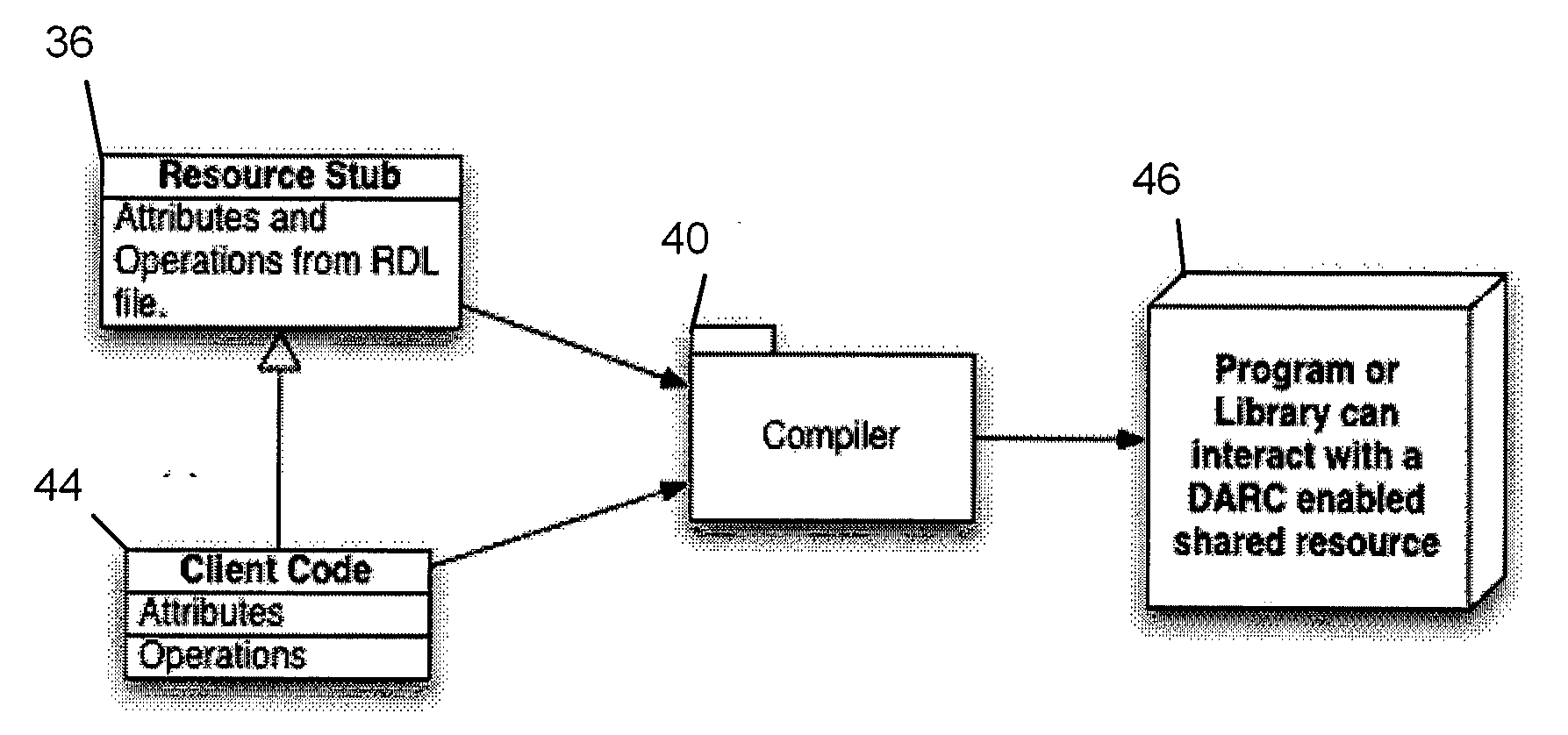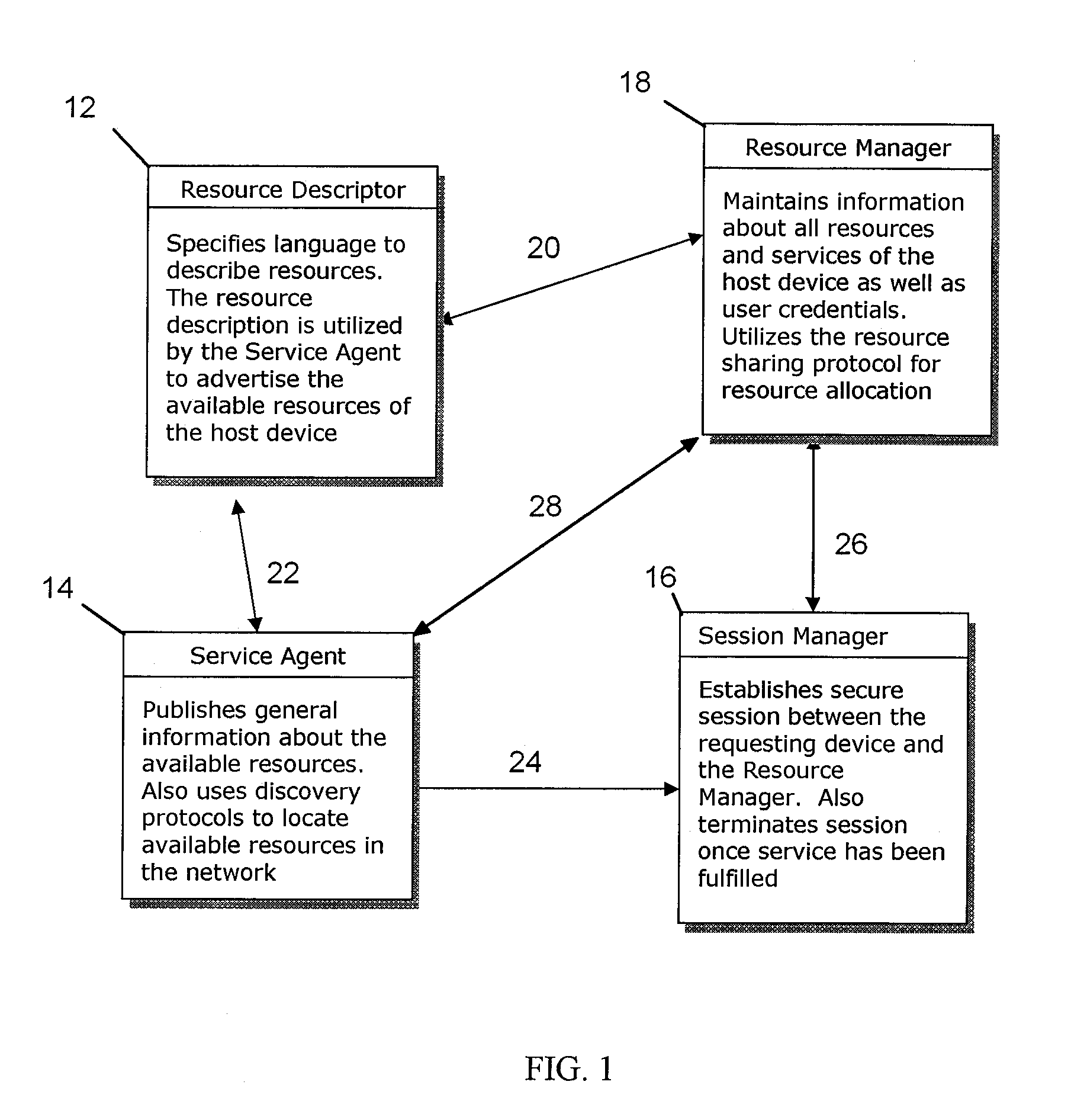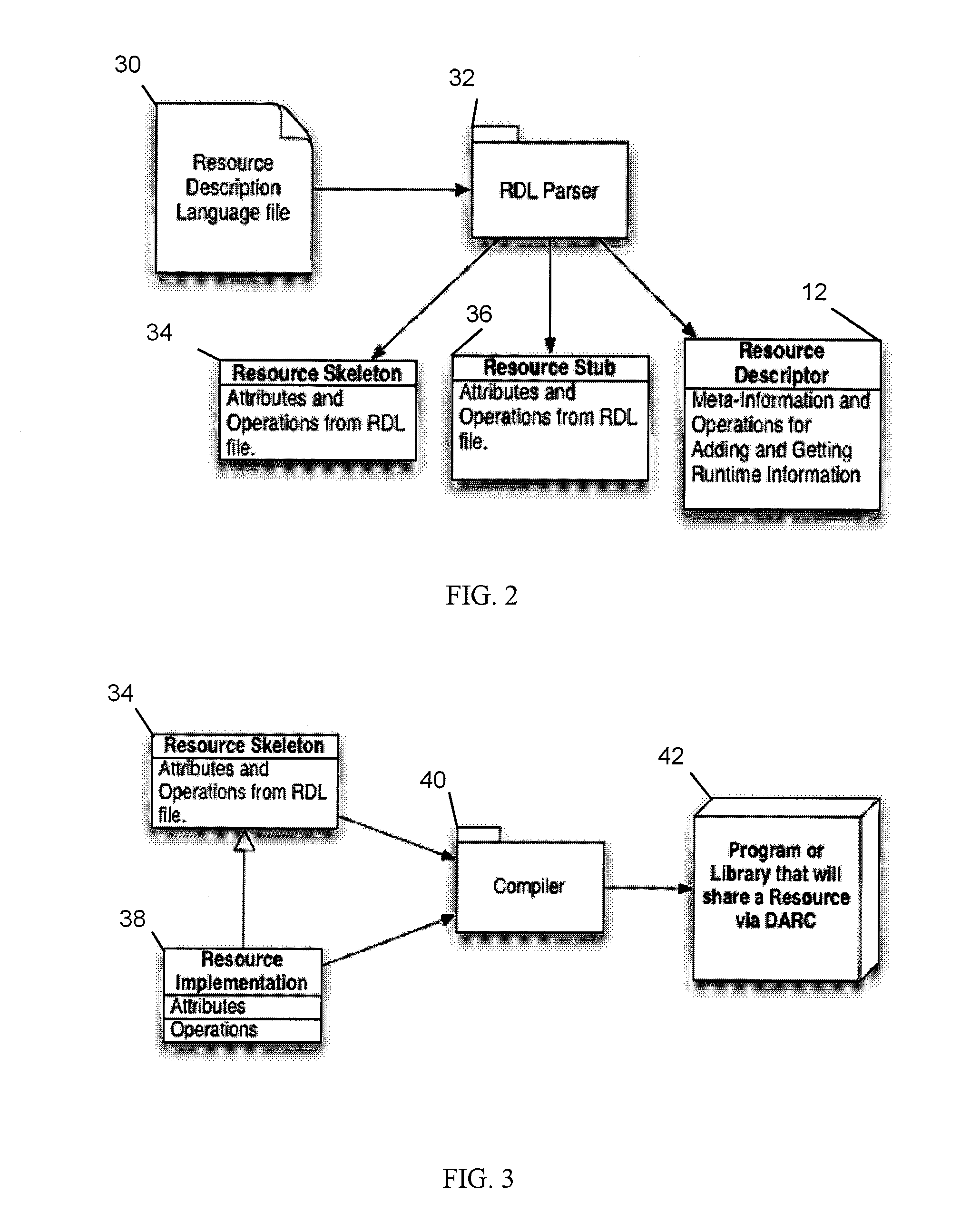Ad hoc distributed resource coordination for a wireless grid
a distributed resource and wireless grid technology, applied in the field of ad hoc networks, can solve the problems of limited battery life and low power consumption, and achieve the effect of rapid development of applications and facilitate interactions
- Summary
- Abstract
- Description
- Claims
- Application Information
AI Technical Summary
Benefits of technology
Problems solved by technology
Method used
Image
Examples
Embodiment Construction
[0024]Following is a glossary of terms used in the present application:
[0025]The term “Ad-Hoc Distributed Resource Coordination (ADRC)” refers to the system and method for resource sharing within and across wired and wireless grids according to the present invention.
[0026]The term “ad hoc network” refers to local area network where devices communicate directly with each other without need of a centralized point of administration or control. The mobile devices form or are a part of the ad hoc network if within close proximity of each other.
[0027]The term “grid” refers to grid computing which builds on the concepts of peer-to-peer computing to coordinate computational resource sharing among groups of computing devices.
[0028]The term “interface definition” refers to a definition for actions and attributes that an object may have. This can be used to represent the interface for a resource that is to be shared within the ADRC framework.
[0029]The term “marshalling” refers to the process o...
PUM
 Login to View More
Login to View More Abstract
Description
Claims
Application Information
 Login to View More
Login to View More - R&D
- Intellectual Property
- Life Sciences
- Materials
- Tech Scout
- Unparalleled Data Quality
- Higher Quality Content
- 60% Fewer Hallucinations
Browse by: Latest US Patents, China's latest patents, Technical Efficacy Thesaurus, Application Domain, Technology Topic, Popular Technical Reports.
© 2025 PatSnap. All rights reserved.Legal|Privacy policy|Modern Slavery Act Transparency Statement|Sitemap|About US| Contact US: help@patsnap.com



